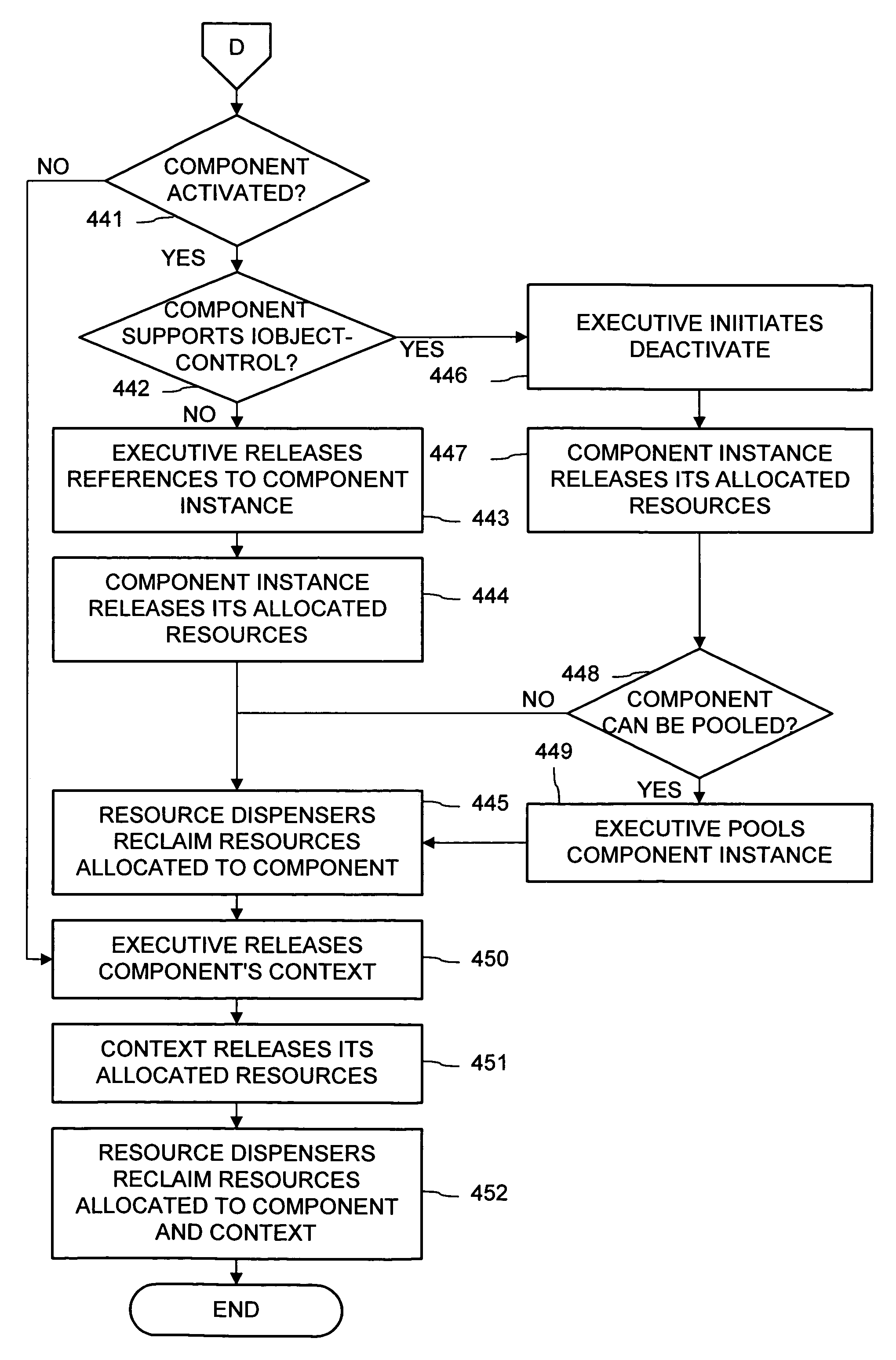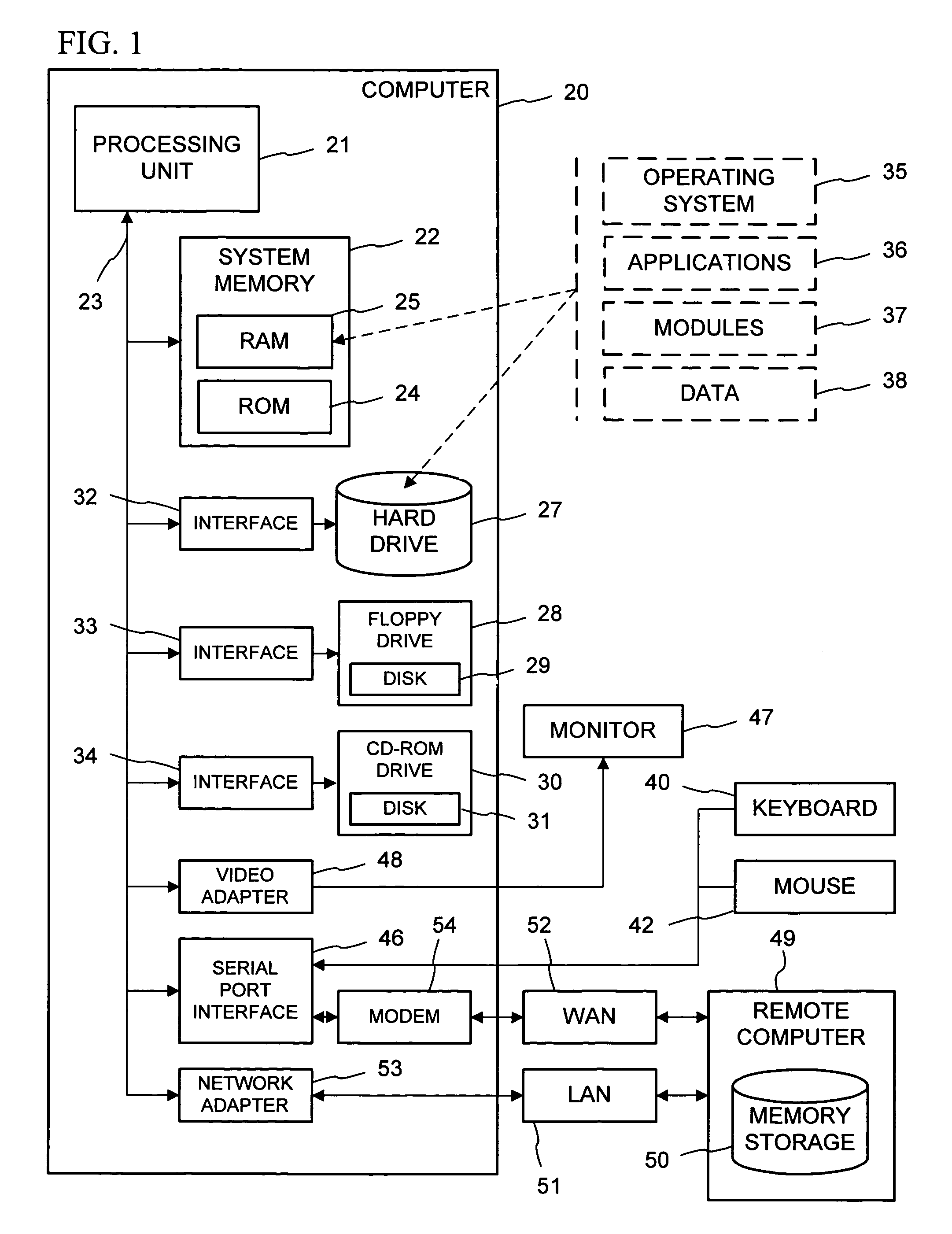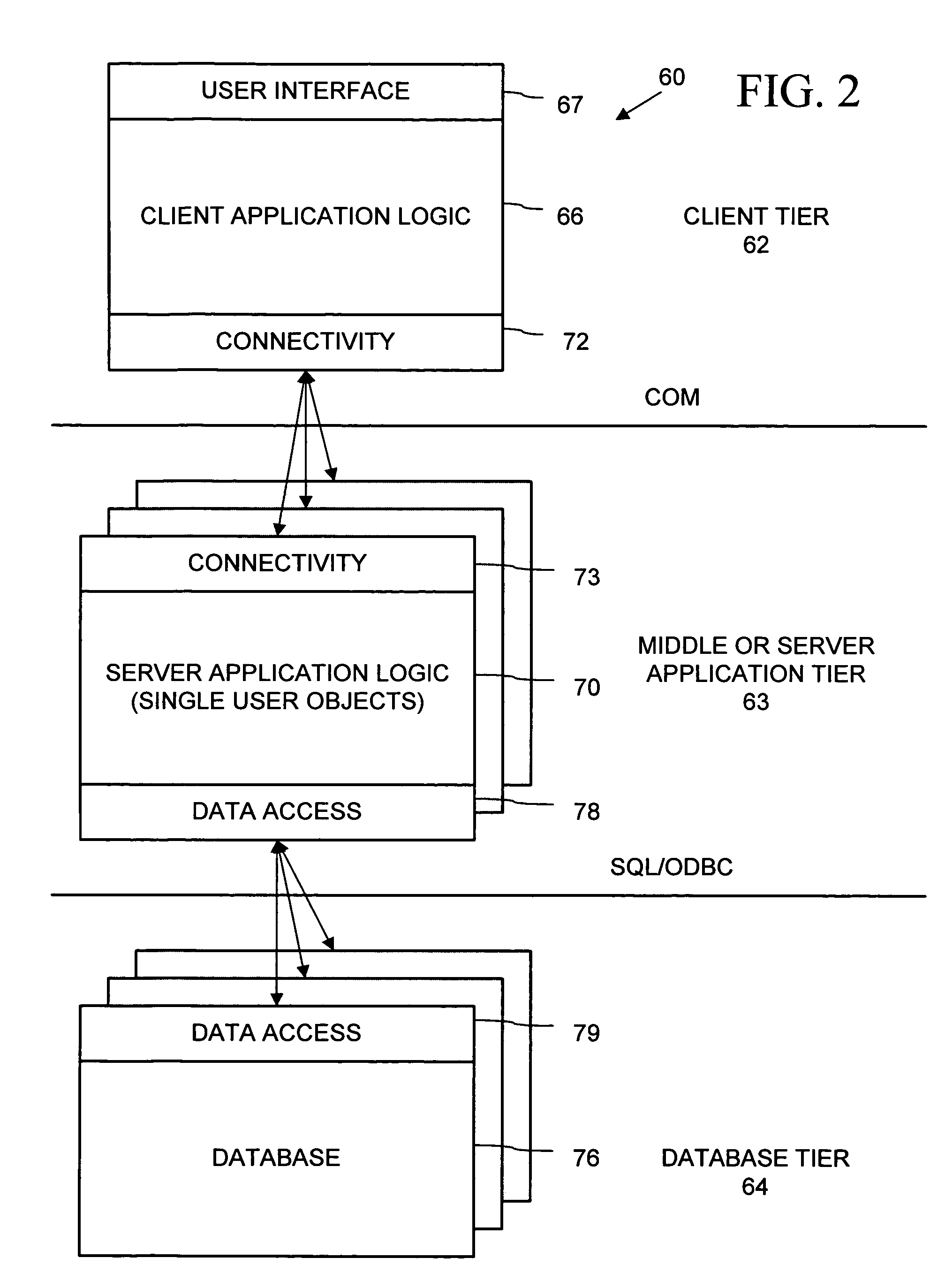As each update may consume significant
processing time, each additional user of the
server application can slow the response or time to complete updates for all other users' updates, thus reducing the
quality of service for all users.
Eventually, the load may exceed the
processing capacity, possibly resulting in
system failure, down time, and lost data.
Programming models generally known as object-oriented
programming provide many benefits that have been shown to increase programmers' productivity, but are in many ways antithetical to the just discussed approach to enhancing
scalability.
However, object-oriented
programming techniques generally are antithetical to the above-discussed approach to enhancing
server application
scalability by minimizing the duration of state to single
client / server application interactions.
A further
disadvantage of object-oriented programming of server applications is that each separate operation with or use of an object often requires creating a separate instance of the object.
However, instantiating each object also is expensive in terms of processing time and thus further reduces server application scalability.
A second issue is that server applications often require coordinating activities on multiple computers, by separate processes on one computer, and even within a
single process.
For example, if only one account is updated in a
money transfer operation due to a
system failure, the
bank in effect creates or loses money for a customer.
Atomicity means that all activities in a transaction either take effect together as a unit, or all fail.
Durability means that the effects of a transaction are permanent and survive
system failures.
Also, if any subordinate node fails in the second phase, the uncommitted work is maintained in durable storage and finally committed during failure
recovery.
Second, the
client and server application typically were developed together by one
programmer or a group of programmers in a single company.
These historical approaches to avoiding pre-mature committal of server application work in a transaction are less effective for, and in some ways antithetical to, component-based server applications that are programmed using object-oriented programming techniques (described above).
However, object-oriented programming techniques generally are antithetical to the above described historical approaches to avoiding pre-mature committal of server application work.
Between these separate client-object interactions, server application work may often be left in an incomplete state.
Without direct
collaboration, the developer of an object used in a server application generally cannot ensure that the developer of a client will not
commit a transaction between calls to the server
application object which leave the server application's work in an incomplete state.
Thus, the second above described approach to avoiding pre-mature committal also is less effective in component-based server applications.
This adds to complexity and increases the burden of programming the server application and client program.
The server application, on the other hand, relies on its clients to properly manage transactions, and cannot guarantee that all client programs properly initiate and complete transactions when using the server application.
The requirement of a client program to explicitly initiate and complete transactions can
pose further difficulties in programming models in which the server application is implemented as separate
software components, such as in object-oriented programming (“OOP”).
However, object-oriented programming models can increase the complexity and thus programming difficulty of the server application where
transaction processing requires explicit
initiation and completion by client programs.
In particular, by encouraging integration of
software components from different vendors, an object-oriented programming model makes it more difficult for programmers to ensure that the client program properly initiates and completes transactions involving the server application's work.
Components that are integrated to form the server application and client programs may be supplied by programmers and vendors who do not directly collaborate, such that it is no longer possible to enforce proper behavior of other components by knocking on a colleague's door down the hall.
A third issue in a server application that is used by a large number of people, it is often useful to discriminate between what different users and groups of users are able to do with the server application.
The use of such
operating system security features to control access to particular processing services in a server application presents cumbersome distribution and deployment issues.
However, the approaches prove more cumbersome when server application development and deployment are carried out separately, such as where an independent
software vendor develops a server application targeted for
general distribution and eventual installation at diverse customer sites.
On the one hand, the server application developer does not know which user ids and groups will be configured on the end customers' computer systems.
On the other, the server application developer must force system administrators to configure specific user ids or groups, which at a minimum could lead to an administratively unwieldy number of user configurations and at worst poses a security risk on the computer systems of the developer's customers.
According to a fourth issue, because these server applications service a large number of users, the server applications must be programmed to deal with problems of concurrent shared access by multiple users.
Shared access by multiple users create a number of well-known problems in correctly
synchronizing updates by the users to durable data, isolating processing of one user from that of another, etc.
These shared access problems are similar to those faced by users of a joint checking account when one user fails to notify the other of changes to the account balance before a check is written, possibly resulting in an
overdraft.
For example, a server application for an on-line bookstore faces a shared access problem where two customers concurrently place an order for the same book, and there is only one copy of the book in inventory.
However, even with use of these
concurrency isolation mechanisms, the task of programming a server application to deal with shared access problems is complex and difficult.
Further,
concurrency isolation mechanisms are among the more sophisticated aspects of programming, and typically require the efforts of
highly skilled programmers.
However, object-oriented programming in itself does not solve shared access problems in a multiple user computing system.
If a second user accesses the object between a first user's interactions with the object, the second user can potentially alter the object's data state causing unintended consequences when the first user initiates processing based on the data state.
 Login to View More
Login to View More  Login to View More
Login to View More 


